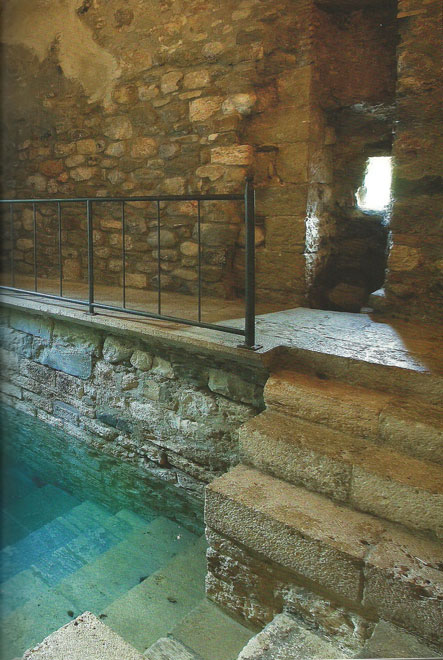The presence of Jews in Besalú is attested in a document from 1229 in which Jaume I the Conqueror reserves to them the function of moneylender. In 1342, the community, hitherto linked to the one in Barcelona, became independent. In those days it numbered 200, a quarter of the total population, and lived side by side with the Christians. We have no information about 1391 and the pogroms. Not until the bull issued by the antipope Benedict XIII was a call created around the synagogue and the Plaça Mayor (Portal Belloch, Capellada, Carrer del Pont, Carrer del Forni i Rocafort). In 1435, the Jews abandoned Besalú for Granollers and Castelló d’Empúries.

A mikvah was discovered in 1964 on the site of an old dye manufacture. Since 1977, development and restoration works have made it accessible to visitors. It dates probably from the thirteenth century and is the only Romanesque mikvah in Spain. Thirty-six steps lead down to a small rectangular room in the basement. In keeping with tradition, the bath has a fine vault overhead and is lit by a window in the eastern wall. This mikvah probably belonged to a synagogue that stood in the site of the garden on today’s Plaça dels Jueus (Jew’s Square). From here there is a fine view of the Fluvia River and its Roman bridge.